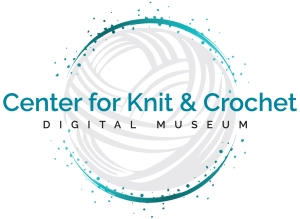Dorothy Porter Wesley: Changing How Books About Black History are Cataloged

Each year during Black History Month, I like to emphasize how you can use the Center for Knit and Crochet’s Library and Museum Collections, which CKC hosts via Digital Public Library of America (http://dp.la) and its partners, as the gateway to a growing ecosystem of freely available digital resources and collections that document significant and everyday contributions of Black Americans to American life and letters.
This year, when I searched CKC’s Library and Museum Collections for “African American,” I selected the Beaded Drawstring Purse with Peacock Design shown above (https://digital.centerforknitandcrochet.org/items/show/34687). This elegant bag is housed at the Anacostia Community Museum (https://anacostia.si.edu) in Washington DC — one of the Smithsonian Institution museums. The museum’s focus is on the culture and daily life of Washington, D.C., and on African American History nationally. You can spend the whole afternoon searching the Anacostia Community Museum’s vast digital collections of art and artifacts, its library and its archival collections.
Visiting the record for the beaded bag with peacocks online in the Anacostia Community Museum, we learn that it measures 15 1/16 x 13 x 7/8”, consistent with the fashion for larger sized beaded bags made in the early 20th Century. It is knitted, and features an Art Deco-era design of two rampant, mirrored peacocks in a subtle and refined palette of gray, black, silver, and blue glass and metal beads. The bag has an elegant gray crocheted edging housing a twisted silk cord drawstring of the same color, which is used to cinch the bag closed. The bag is ornamented with a beaded tassel, and the museum states that it is lined with cotton fabric.
The bag belonged to Dorothy Porter Wesley (1905 – 1995), the noted librarian, writer, scholar, bibliographer, and change agent. According to the African American Registry (AAREG), Wesley graduated from Howard University in 1928, and was the first Black woman to be awarded a Master’s degree in Library Science from Columbia University in 1932. In “Remembering the Howard University Librarian Who Decolonized the Way Books were Catalogued,” an article published in Smithsonian Magazine by Zita Christina Nunes, November 26, 2018, Nunes credits Dorothy Porter Wesley for building the noted Moorland-Spingarn Research Library at Howard University into one of the most comprehensive and well-recognized repositories for Black history and culture. She started with foundational collections created by two important collectors — the Reverend Jesse E. Moorland, a Howard University alumnus and secretary of the Washington, DC branch of the YMCA, and Arthur B. Spingarn, a lawyer and longtime chair of the NAACP’s legal committee.
But Nunes asserts that Wesley did something more. Wesley recalled that under the Dewey Decimal System, all materials related to Black history, knowledge, culture, and experience, including 20th Century materials, were typically classified under one of two numbers – “325” for colonization, or “326” for slavery. As Nunes relates, and AAREG confirms, Wesley and her colleagues at Howard University ultimately developed a new cataloging system – called “the Africana system” – which cataloged works by and about Black people in all subject areas – “art, anthropology, communications, demography, economics, education, geography, history health, international relations, linguistics, literature, medicine, music, political science, sociology, sports, and religion.” This new system “challenged racism where it was produced by centering work by and about black people within scholarly conversations around the world.” Wesley went on to write books and to develop core bibliographies that formed the basis for teaching Black History.
There is much more I would like to know about the beautiful beaded purse with two rampant peacocks – who made it, and whether Dorothy Porter Wesley inherited it as a family heirloom, purchased it herself, or received it as a gift from a friend or family member. I’d like to know what events she attended with it on her arm, and what outfits she wore it with. I’d like to know what appealed to her about these peacocks, cloaked in their sober and delicate hues of blue and gray. But even though I’ll likely never know more about the knitted bag, I have been enlightened greatly by learning about Dorothy Porter Wesley, and by my journeys to these two amazingly accessible digital collections centering Black history and achievement at the Anacostia Community Museum, and the Moorland-Spingarn Research Library at Howard University. I hope you will all follow me there and take some time to explore these collections yourself.
Jennifer Lindsay
President
February 28, 2023
Additional Resources:
“Thursday, May 25, 1905: Dorothy Porter Wesley, Librarian and Writer, born.” African American Registry, https://aaregistry.org/story/dorothy-porter-wesley-developed-a-research-library-for-black-studies/ , accessed February 28, 2023.
Zita Christina Nunes. “Remembering the Howard University Librarian Who Decolonized the Way Books were Catalogued.” Smithsonian Magazine, November 26, 2018.
https://www.smithsonianmag.com/history/remembering-howard-university-librarian-who-decolonized-way-books-were-catalogued-180970890/, accessed February 28, 2023.



Leave a Reply
Want to join the discussion?Feel free to contribute!